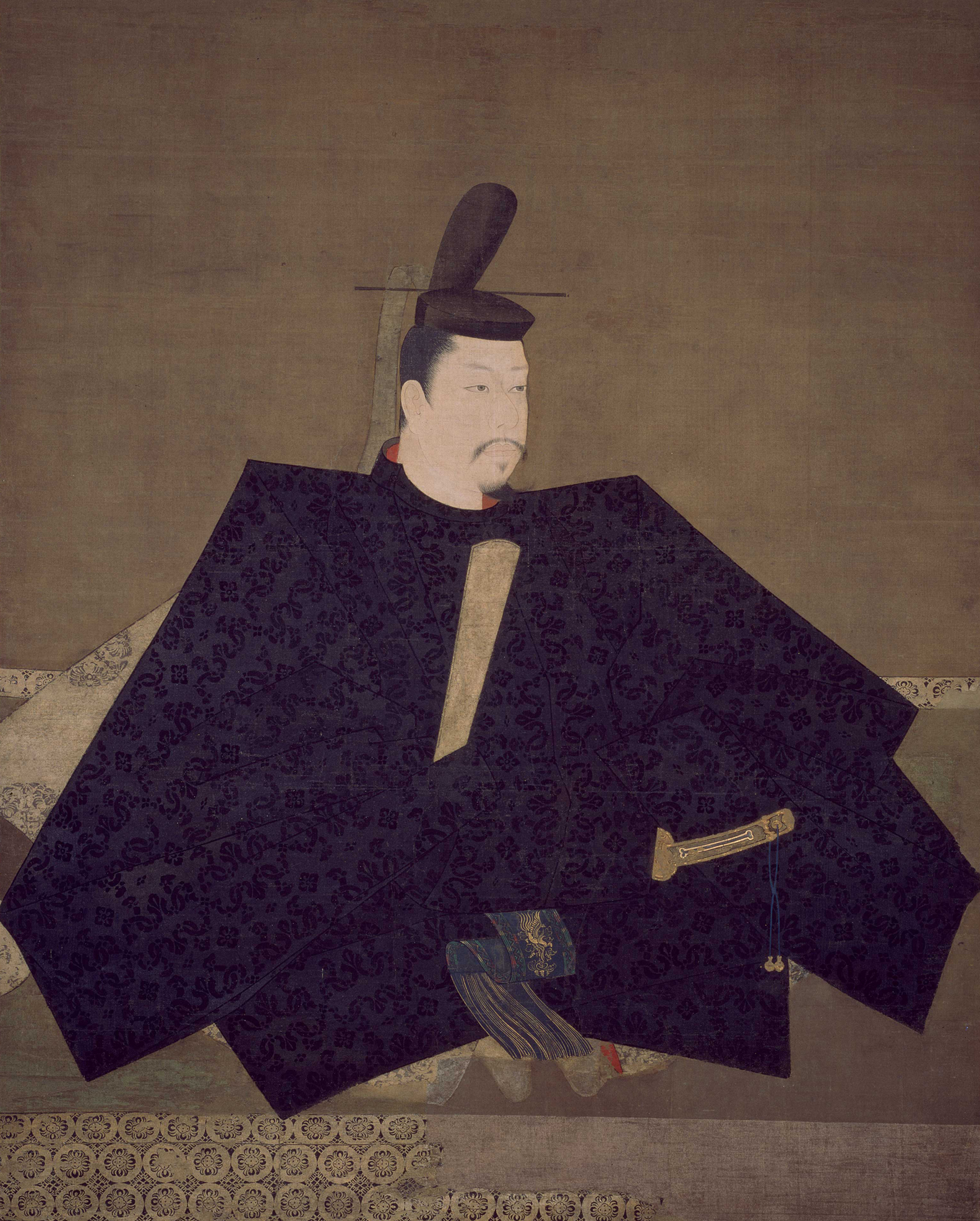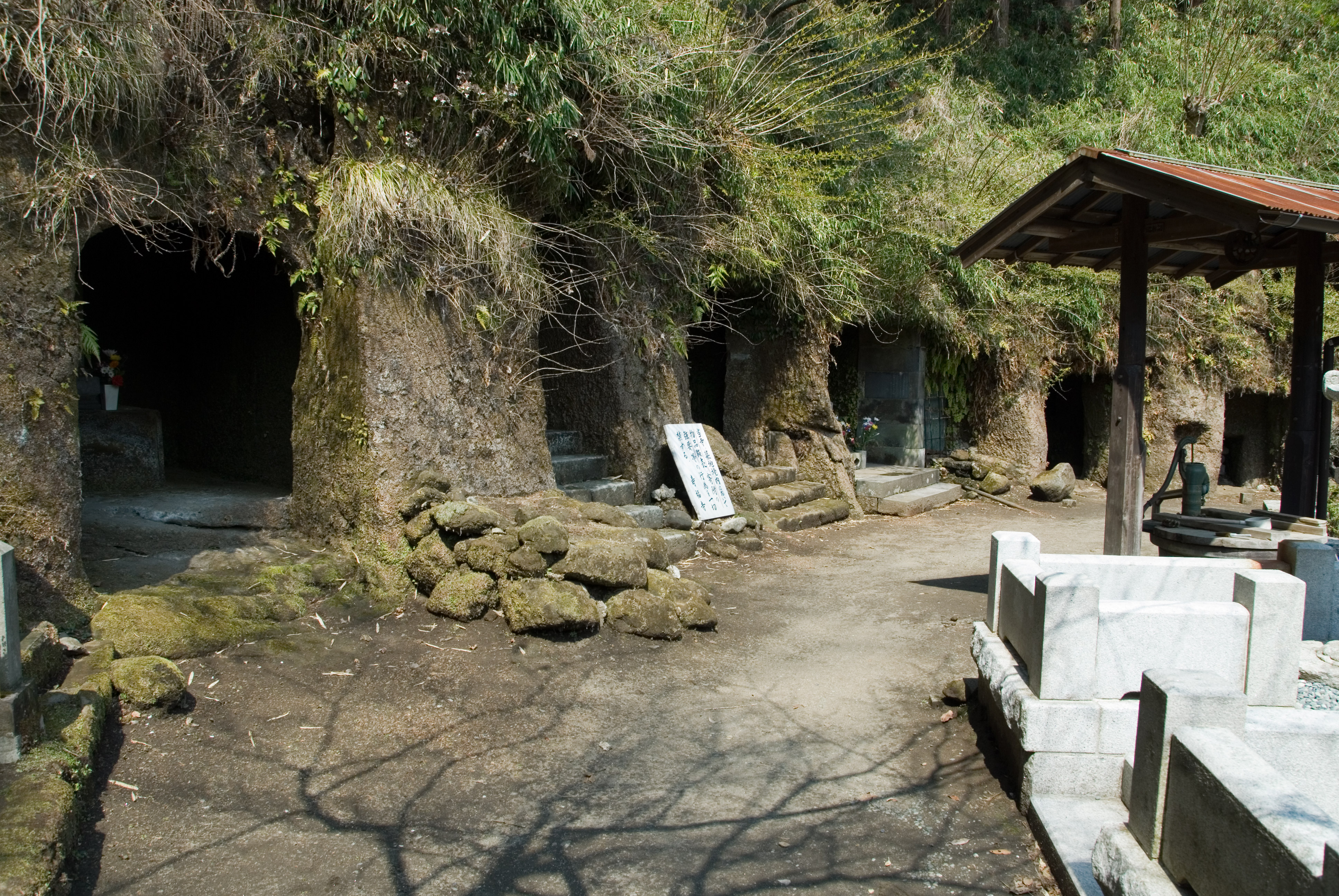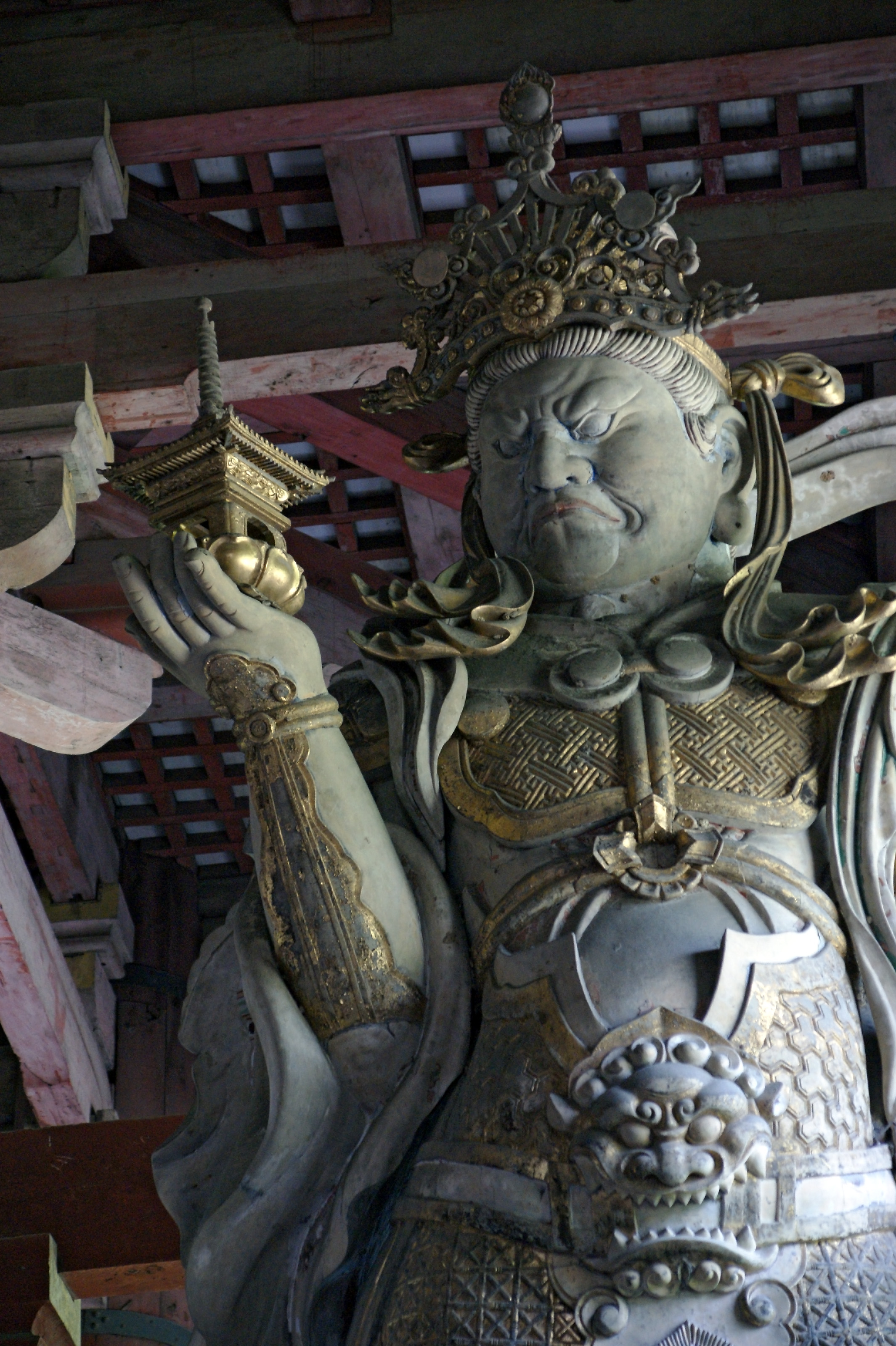|
Jufuku-ji
, usually known as Jufuku-ji, is a temple of the Kenchō-ji branch of the Rinzai sect and the oldest Zen temple in Kamakura, Kanagawa Prefecture, Japan. Ranked third among Kamakura's prestigious Five Mountains, it is number 24 among the pilgrimage temples and number 18 of the temples. Its main object of worship is Shaka Nyorai. History The temple was founded by Hōjō Masako (1157–1225), a great historical figure familiar enough to the Japanese to appear on television ''jidaigeki'' dramas, in order to enshrine her husband Minamoto no Yoritomo (1147–1199), founder of the Kamakura shogunate, who died falling from his horse in 1199. Having chosen Jufuku-ji's present site because it used to be Yoritomo's father's residence, she invited Buddhist priest Myōan Eisai to be its founding priest. Eisai is important in the history of Zen because it was he who, after being ordained in China, introduced it to Japan. He is also known for introducing green tea to the country. Ostracized b ... [...More Info...] [...Related Items...] OR: [Wikipedia] [Google] [Baidu] |
Kamakura, Kanagawa
, officially , is a Cities of Japan, city of Kanagawa Prefecture in Japan. It is located in the Kanto region on the island of Honshu. The city has an estimated population of 172,929 (1 September 2020) and a population density of 4,359 people per km2 over the total area of . Kamakura was designated as a city on 3 November 1939. Kamakura was Japan's ''de facto'' capital when it was the seat of the Kamakura shogunate from 1185 to 1333, established by Minamoto no Yoritomo. It was the first military government in Japan's history. After the downfall of the shogunate, Kamakura saw a temporary decline. However, during the Edo period, it regained popularity as a tourist destination among the townspeople of Edo (Tokyo), Edo. Despite suffering significant losses of historical and cultural assets due to the 1923 Great Kantō earthquake, Great Kantō Earthquake in 1923, Kamakura continues to be one of the major tourist attractions in the Kanto region, known for its historical landmarks such as ... [...More Info...] [...Related Items...] OR: [Wikipedia] [Google] [Baidu] |
Kamakura
, officially , is a city of Kanagawa Prefecture in Japan. It is located in the Kanto region on the island of Honshu. The city has an estimated population of 172,929 (1 September 2020) and a population density of 4,359 people per km2 over the total area of . Kamakura was designated as a city on 3 November 1939. Kamakura was Japan's '' de facto'' capital when it was the seat of the Kamakura shogunate from 1185 to 1333, established by Minamoto no Yoritomo. It was the first military government in Japan's history. After the downfall of the shogunate, Kamakura saw a temporary decline. However, during the Edo period, it regained popularity as a tourist destination among the townspeople of Edo. Despite suffering significant losses of historical and cultural assets due to the Great Kantō Earthquake in 1923, Kamakura continues to be one of the major tourist attractions in the Kanto region, known for its historical landmarks such as Tsurugaoka Hachimangū and the Great Buddha of Kamaku ... [...More Info...] [...Related Items...] OR: [Wikipedia] [Google] [Baidu] |
Five Mountain System
The system, more commonly called simply ''Five Mountain System'', was a network of state-sponsored Chan (Zen) Buddhist temples created in China during the Southern Song (1127–1279). The term "mountain" in this context means "temple" or "monastery", and was adopted because the traditional name for monastics was mountain monks as many monasteries were built on isolated mountains. The system originated in India and was then adopted by China, later spreading to Japan during the late Kamakura period (1185–1333). In Japan, the ten existing "Five Mountain" temples (five in Kyoto and five in Kamakura, Kanagawa) were both protected and controlled by the shogunate.Iwanami Nihonshi Jiten, ''Gozan''. In time, they became a sort of governmental bureaucracy that helped the Ashikaga shogunate stabilize the country during the turbulent Nanboku-chō period. Below the ten ''Gozan'' temples there were ten so-called temples, followed by another network called . The terms ''Gozan'' and Five ... [...More Info...] [...Related Items...] OR: [Wikipedia] [Google] [Baidu] |
Yagura (tombs)
are artificial caves used during the Middle Ages in Kamakura, Kanagawa Prefecture, Japan, as tombs and cenotaphs.Kamakura Shōkō Kaigijo, (2008, 35–38)Kawano (2005: 171) It is likely that they were used only as tombs in the beginning, and were later used as cenotaphs. The dead are mostly from the samurai class, but the names of priests and artisans have also been found.Kawano (2005: 173) These tombs are extremely numerous in the hills surrounding Kamakura, and estimates of their number range from 1,500 to over 5,000. The total number will remain unknown, as many have been destroyed and others may not yet have been found. ''Yagura'' can be found either isolated, as in the case of the ''Harakiri Yagura'', or in clusters of almost 200 caves.A Guide to Kamakura, ''Terminology'' Groups of yagura are labeled with the suffix . The most conveniently seen ''yagura'' for most tourists are those at Jufuku-ji, near Kamakura station. Its cemetery has many yagura, including those with the ce ... [...More Info...] [...Related Items...] OR: [Wikipedia] [Google] [Baidu] |
Shinbutsu Bunri
The Japanese term indicates the separation of Shinto from Buddhism, introduced after the Meiji Restoration which separated Shinto ''kami'' from buddhas, and also Buddhist temples from Shinto shrines, which were originally amalgamated. It is a yojijukugo phrase. Background before 1868 Until the end of the Edo period, in 1868, Shinto and Buddhism were intimately connected in what was called ''shinbutsu-shūgō'' (神仏習合), to the point that the same buildings were often used as both Shinto shrines and Buddhist temples, and Shinto gods were interpreted as manifestations of Buddhas. However, the tendency to oppose Buddhism as a foreign import and to uphold Shinto as the native religion can be seen already during the early modern era, partly as a nationalistic reaction.. In a broad sense, the term ''shinbutsu bunri'' indicates the effects of the anti-Buddhist movement that, from the middle of the Edo period onwards, accompanied the spread of Confucianism, the growth of stud ... [...More Info...] [...Related Items...] OR: [Wikipedia] [Google] [Baidu] |
Rinzai
The Rinzai school (, zh, t=臨濟宗, s=临济宗, p=Línjì zōng), named after Linji Yixuan (Romaji: Rinzai Gigen, died 866 CE) is one of three sects of Zen in Japanese Buddhism, along with Sōtō and Ōbaku. The Chinese Linji school of Chan Buddhism was first transmitted to Japan by Myōan Eisai (1141 –1215). Contemporary Japanese Rinzai is derived entirely from the Ōtōkan lineage transmitted through Hakuin Ekaku (1686–1769), who is a major figure in the revival of the Rinzai tradition. History Rinzai is the Japanese line of the Chinese Linji school of Chan Buddhism, which was founded during the Tang dynasty by Linji Yixuan (Japanese: Rinzai Gigen). Kamakura period (1185–1333) Though there were several attempts to establish Rinzai lines in Japan, it first took root in a lasting way through the efforts of the monk Myōan Eisai. In 1168, Myōan Eisai traveled to China, where he studied Tendai for twenty years. In 1187, he went to China again, and returne ... [...More Info...] [...Related Items...] OR: [Wikipedia] [Google] [Baidu] |
Minamoto No Sanetomo
was the third ''shōgun'' of the Kamakura shogunate. He was the second son of the Kamakura shogunate founder, Minamoto no Yoritomo. His mother was Hōjō Masako and his older brother was the second Kamakura shogun Minamoto no Yoriie. His childhood name was . He was the last head of the Minamoto clan of Japan. His Dharma name was . He was an accomplished '' waka'' poet. Early life After the death of Yoritomo in 1199, Sanetomo's maternal grandfather Hōjō Tokimasa usurped the political and military power of the Shogunate, relegating the position and title of '' Sei-i Taishōgun'', or ''shōgun'', to a figurehead. Through hereditary succession, Sanetomo's older brother Yoriie became ''Sei-i Taishōgun'' in 1202, only to be stripped of the title a year later and put under house arrest for plotting against the Hōjō clan. This was presumably to keep the ''shōgun'' a child and thus needing a regent (''shikken'') to make decisions in his place. Shortly thereafter, in 1203, S ... [...More Info...] [...Related Items...] OR: [Wikipedia] [Google] [Baidu] |
Hōjō Masako
was a Japanese politician who exercised significant power in the early years of the Kamakura period, which was reflected by her contemporary sobriquet of the "nun shogun". She was the wife of Minamoto no Yoritomo, and mother of Minamoto no Yoriie and Minamoto no Sanetomo, the first, second and third Shogun, shoguns of the Kamakura shogunate, respectively. She was the eldest daughter of Hōjō Tokimasa and sister of Hōjō Yoshitoki, both of them ''shikken'' of the Kamakura shogunate. Early life and marriage (1157–1182) Hōjō Masako (her real name is unknown; she was called Masako after her father's name Tokimasa by later researchers) was born in 1157, eldest child of Hōjō Tokimasa, leader of the influential Hōjō clan of Izu Province, Izu province, and his wife, Hōjō no Maki. Masako's parents were still in their teens, so she was raised by many ladies-in-waiting and nannies. Masako was born into a world of war and strife. In Kyoto, the capital of Japan, the Hōgen Rebel ... [...More Info...] [...Related Items...] OR: [Wikipedia] [Google] [Baidu] |
Myōan Eisai
was a Japanese Buddhist priest, credited with founding the Rinzai school, the Japanese line of the Linji school of Zen Buddhism. In 1191, he introduced this Zen approach to Japan, following his trip to China from 1187 to 1191, during which he was initiated into the Linji school by the master Hsü an. It is also said that he popularized green tea in Japan, following this same trip. He was also the founding abbot of Japan's first Zen temple Shōfuku-ji and Kennin-ji. He is often known simply as Eisai/Yōsai Zenji (栄西禅師), literally "Zen master Eisai". Biography Born in Bitchū Province (modern-day Okayama, Okayama), Eisai was ordained as a monk in the Tendai sect. Dissatisfied with the state of Buddhism at the time, in 1168 he set off on his first trip to Mount Tiantai in China, the origin of the sect, where he learned of the primacy of the Chan (later known in Japan as Zen) school in Chinese Buddhism of the time. He spent only six months in China on this first trip, ... [...More Info...] [...Related Items...] OR: [Wikipedia] [Google] [Baidu] |
Deva Kings
The Four Heavenly Kings are four Buddhist gods or ''devas'', each of whom is believed to watch over one cardinal direction of the world. The Hall of Four Heavenly Kings is a standard component of Chinese Buddhist temples. Names The Kings are collectively named as follows: Individually, they have different names and features. File:Guardian of Phra Meru Mas of Bhumibol Adulyadej - Vessavana (right side).jpg, Vaiśravaṇa of the north direction, king of yakṣas. File:Guardian of Phra Meru Mas of Bhumibol Adulyadej - Virulhaka (right side).jpg, Virūḍhaka of the south direction, king of kumbhāṇḍas. File:Guardian of Phra Meru Mas of Bhumibol Adulyadej - Dhatarattha (left side).jpg, Dhṛtarāṣṭra of the east direction, king of gandharvas. File:Guardian of Phra Meru Mas of Bhumibol Adulyadej - Virupakkha (left side).jpg, Virūpākṣa of the west direction, king of nāgas. Mythology All four Kings serve , the lord of the devas of . On the 8th, 14th and 15th da ... [...More Info...] [...Related Items...] OR: [Wikipedia] [Google] [Baidu] |
Kannon
Guanyin () is a common Chinese name of the bodhisattva associated with Karuṇā, compassion known as Avalokiteśvara (). Guanyin is short for Guanshiyin, which means "[The One Who] Perceives the Sounds of the World". Originally regarded as male in Indian Buddhism, Guanyin has been more commonly depicted as female in China and most of East Asia since about the 12th century. Due to sociogeographical factors, Guanyin can also be historically depicted as genderless or adorning an androgynous apprentice. On the 19th day of the sixth lunar month, Guanyin's attainment of Buddhahood is celebrated. Guanyin has been incorporated in other religions, including Taoism and Chinese folk religion. Some Buddhists believe that when one of their adherents departs from this world, they are placed by Guanyin in the heart of a sacred lotus in religious art, lotus and then sent to the western pure land of Sukhāvatī. Guanyin is often referred to as the "most widely beloved Buddhist Divinity" with ... [...More Info...] [...Related Items...] OR: [Wikipedia] [Google] [Baidu] |








